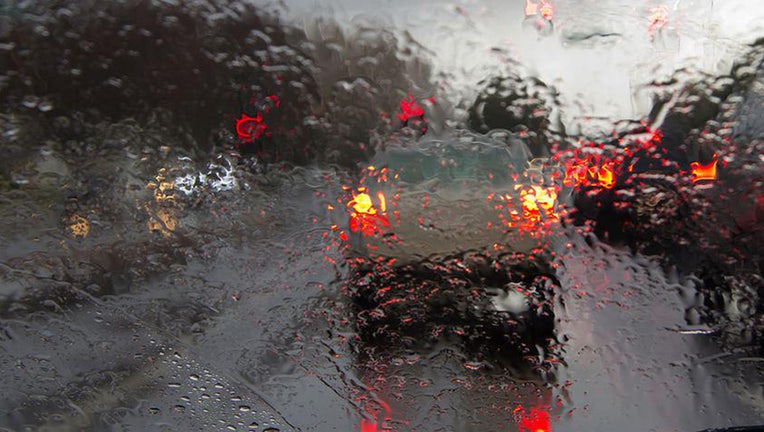Now, Florida drivers can legally use their hazard lights in the rain – in most cases

Credit: Florida Department of Highway Safety and Motor Vehicles
TAMPA, Fla. - A new law in Florida will allow its drivers to do something they were told was illegal for years: using hazard lights in the rain.
Just two days before the new law would take effect, Governor Ron DeSantis signed a 38-page transportation bill with the changes tucked in the middle of the text. According to the Florida Highway Patrol, the Sunshine State law no longer prohibits driving with flashing hazard lights in certain severe weather conditions on certain roadways. This law went into effect Thursday, July 1.
Specifically, drivers can press that triangle button to activate the flashing lights when conditions create "extreme low visibility" while they are on roads with speed limits at or above 55 mph. Those weather conditions include heavy rain, fog, or smoke.
Florida now joins more than 40 other states allowing drivers to use hazard lights while driving in certain situations, according to AAA.
READ: These new Florida laws take effect this week
"However, if drivers feel unsafe while driving in severe weather," troopers say, "the safest option may be to pull over to the side of the road, or off the road, until conditions improve."
Before July 1, if a Florida driver had their hazard lights on – even during a downpour – they were driving illegally.

2018 Coverage: Don't drive with flashers on, Tampa police say
With a rainy week upon us, Officer Roy with the Tampa Police Department reminds all that it's against the law to drive with hazard lights on in Florida.
PREVIOUS COVERAGE: Driving with your hazard lights in Florida is illegal
Under the previous law, hazard lights were only meant for when your car has broken down or stopped on the side of the road. The only time it can be used while driving your vehicle is if you are in a funeral procession. It would then be a signal to other drivers not to drive in between or interfere with the procession.
For years and years, state transportation officials took to social media, media outlets and used FDOT message boards to reminds drivers not to use those flashing lights in the rain. It wasn't always followed.
FHP offered the following tips for drivers traveling in severe weather:
- Driving in severe weather conditions can significantly increase the potential for a dangerous situation.
- Sometimes the best decision drivers can make is to stay put until the storm passes. If driving is the only option, buckle up, and follow these rules to ensure safety:
- Turn lights and wipers on. Florida law requires that if a vehicle’s wipers are in use, headlights must be on. To ensure high visibility, headlights should be clean and clear and wipers should be replaced at least once a year.
- Slow down. Keep a safe stopping distance between vehicles and avoid passing and/or changing lanes. Wet pavement can result in skidding and hydroplaning. Be patient and stay alert. Use the right edge of the road or painted road markings as a guide.
- Turn around; don't drown. Never drive through flooded areas. The area of roadway beneath the water may be washed out or may conceal debris or even power lines.
- Never stop on the road. Doing so may result in a chain-reaction collision. If you must pull off the road, signal first and carefully pull off as far as possible. After pulling completely off the road, turn on hazard flashers.

